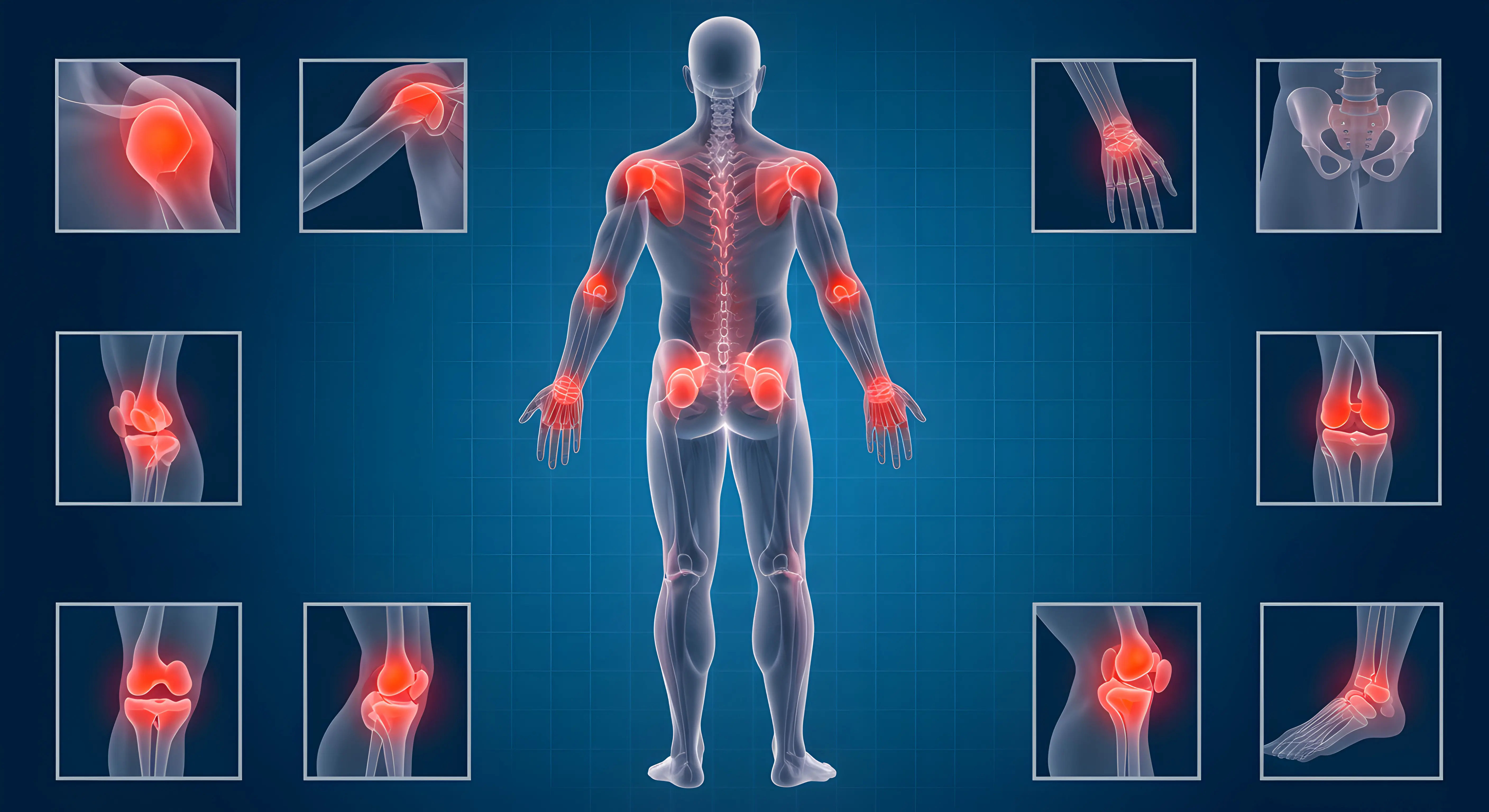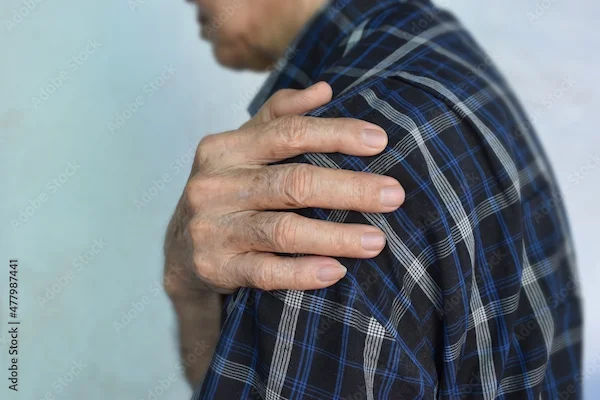Guide to How to Treat Frozen Shoulder
Regain mobility and eliminate shoulder pain. This comprehensive guide details effective treatments, exercises, and tips for managing and recovering from frozen shoulder (adhesive capsulitis).

Written by Dr. Mohammed Kamran
Reviewed by Dr. Rohinipriyanka Pondugula MBBS
Last updated on 27th Oct, 2025

Introduction
Stiff, aching, and hard to lift—if that sounds like your shoulder, you may be dealing with frozen shoulder, also called adhesive capsulitis. The good news: most people improve significantly with the right mix of time, pain control, and targeted exercises. The tough part is knowing how to treat frozen shoulder step-by-step without making it worse or losing months to trial and error.
This guide walks you through what frozen shoulder is, who gets it, and what’s really happening inside the joint. You’ll learn exactly how to treat frozen shoulders at home, which exercises matter most, and how to sleep and work with less pain. We’ll also explain the medical options—like corticosteroid injections, hydrodilatation, and minimally invasive procedures—so you know when it’s time to escalate care. Throughout, we’ll share practical tips, real-world timelines, and evidence-backed options gathered from top medical sources. If symptoms persist or stop improving, we’ll also show you how to quickly connect with care.
Understanding Frozen Shoulder (Adhesive Capsulitis)
What it is and how it differs from rotator cuff problems
Frozen shoulder is a condition where the capsule surrounding your shoulder joint thickens and tightens, leading to pain and a progressive loss of motion. Unlike a rotator cuff tear—which often causes weakness and pain with specific movements—a frozen shoulder primarily limits your ability to move the joint in multiple directions, especially external rotation (turning your arm outward) and overhead reach. People often report deep, dull pain that can worsen at night and a stiff, “stuck” feeling when attempting simple tasks like fastening a bra or reaching a high shelf.
The three stages: freezing, frozen, thawing
- Freezing (painful) stage: Pain increases and motion decreases over weeks to months. Reaching and sleeping can be very difficult.
- Frozen (stiff) stage: Pain may lessen, but stiffness peaks and range of motion is most restricted.
- Thawing (recovery) stage: Motion gradually returns, often over months; function steadily improves.
- The overall natural course can span 1–3 years, though interventions can shorten pain duration and speed recovery of function for many.
What’s happening inside the shoulder capsule
The shoulder capsule becomes inflamed, then fibrotic (thicker and tighter), forming adhesions that restrict movement—particularly in the inferior and anterior portions of the capsule. This capsular contracture explains why externally rotating the arm or reaching overhead becomes so challenging. Understanding this capsule-centric problem is why gentle, well-aimed capsular stretches and, in some cases, capsular-directed procedures are central to treatment.
Consult a Top General Physician
Who Gets Frozen Shoulder and Why?
Diabetes, thyroid issues, and metabolic links
Frozen shoulder affects about 2–5% of the general population and is more common in people with diabetes (reported in up to 10–20%) and thyroid disorders. Researchers suspect metabolic and low-grade inflammatory pathways contribute to capsular fibrosis. If you have diabetes, optimizing glucose control may support better outcomes. If symptoms persist beyond two weeks or are severe from the start, consult a doctor online with Apollo 24|7 for further evaluation; they can also coordinate tests when needed, such as HbA1c or thyroid labs. Apollo 24|7 offers a convenient home collection for tests like HbA1c and thyroid function.
After injury, surgery, or immobilization
Frozen shoulder can follow trauma (like a fracture) or surgery when the shoulder is immobilized for a prolonged period. Gentle, early motion—when safe—reduces risk. If you’ve recently had a shoulder injury or operation, ask your clinician for a protective mobility plan to balance healing with movement.
Other risk factors: age, sex, and lifestyle
It’s most common between ages 40 and 60 and slightly more frequent in women. Prolonged sedentary periods, guarding due to pain, and postural strain may contribute. A prior episode in one shoulder raises the risk in the other shoulder later, though it doesn’t happen to everyone.
Symptoms, Diagnosis, and When to See a Doctor
Typical symptoms and red flags
Common symptoms include:
- Deep shoulder ache with sharp twinges at the end range
- Pain worse at night and difficulty sleeping on the affected side
- Restricted motion in multiple directions, especially external rotation and overhead reach
- Red flags—seek prompt care—include fever, unexplained swelling, severe trauma, neurological symptoms (numbness/weakness), or systemic illness.
How doctors diagnose adhesive capsulitis?
- Diagnosis is clinical: your clinician assesses active and passive range of motion. With frozen shoulders, both are limited, especially external rotation, and the end feel is characteristically stiff.
- Strength may be relatively preserved compared with a large rotator cuff tear. Imaging (X-ray, ultrasound, MRI) is typically used to rule out other causes (e.g., arthritis, calcific tendinopathy, rotator cuff tears) rather than to “prove” frozen shoulder.
Tests and imaging: when they help and when they don’t?
X-rays: Rule out arthritis or fracture.
- Ultrasound/MRI: Consider if a tear or other pathology is suspected.
- Labs: In selected cases, diabetes or thyroid tests can be helpful. If you need labs, Apollo 24|7
- offers home collection for tests like HbA1c and TSH/T4 for convenience.
When to get help?:
- Pain and stiffness worsening for more than 2–4 weeks
- Sleep severely disrupted
- Home program not improving symptoms after 3–4 weeks
If your condition does not improve after trying these methods, book a physical visit to a doctor with Apollo 24|7.
Treating Frozen Shoulder at Home: Pain Relief and Safe Movement
Heat/ice, over-the-counter meds, and sleep strategies
- Heat before motion: 10–15 minutes of a warm pack or shower helps relax tissues. Ice after exercise can calm reactive pain.
- OTC meds: When appropriate, short courses of NSAIDs (e.g., ibuprofen) or acetaminophen can reduce pain. Always follow label guidance and ask your doctor if you have heart, kidney, stomach, or bleeding risks.
- Sleep: Use a supportive pillow under the elbow/forearm to slightly abduct the arm. A pillow behind your back can prevent rolling onto the sore side. Side sleepers often do better on the non-affected side with the affected arm supported out front.
Activity pacing and gentle range-of-motion
Adopt a “little and often” approach:
- Micro-sessions: 5–7 minutes, 3–5 times per day.
- Motion first, intensity later: Start with gentle pendulums and table slides, then progress to capsular stretches as pain allows.
- 24-hour rule: Slight soreness during or after exercises is okay if it settles within 24 hours. If pain lingers or sleep worsens, dial back intensity or volume.
What to avoid in each stage?
- Freezing stage: Avoid aggressive stretching that triggers prolonged flare-ups; focus on pain control and gentle movement.
- Frozen stage: Increase stretch time but keep intensity modest; avoid jerking or ballistic moves.
- Thawing stage: Gradually add end-range holds and, later, light strengthening to consolidate gains.
Unique tip: Track a “shirt test”—how easily you can put on a jacket or reach a back pocket—as a real-life progress marker. It’s often more motivating than numbers alone.
Physical Therapy and Exercises That Work
Foundational moves: pendulums and passive ROM
- Pendulums: Lean forward with your trunk supported by the other hand on a table. Let the arm hang and gently sway in small circles. Goal: pain modulation and gentle traction.
- Table/wall slides: Use a towel on a table or your fingers on a wall to “walk” the arm forward/up.
- Let your body move toward the hand to reduce shoulder effort. This supports passive or assisted range of motion, easing strain on the capsule.
Capsular stretches: cross-body, external rotation, overhead
- Cross-body stretch: Use the opposite hand to bring the affected arm across the chest. Hold 20–30 seconds, 3–5 reps.
- External rotation (ER) with stick: Elbow at side, forearm forward; use a stick or cane to gently push the forearm outward. Keep the elbow tucked. Hold 20–30 seconds, 3–5 reps. ER is often most limited in adhesive capsulitis
- Overhead reach (flexion) using a doorframe or pulleys: Assisted lift to just beyond comfortable end range. Avoid shrugging.
- Frequency and dosage: 1–2 times daily during the painful phase, progressing to 2–3 times daily in the stiff phase, with 60–120 total seconds per stretch.
Frequency, progression, and tracking your gains
Advance by:
- Time under stretch: Increase holds from 20 to 45–60 seconds as tolerated.
- Range landmarks: Track where your hand reaches on a wall or the angle your forearm reaches in external rotation.
- Function goals: e.g., washing hair, fastening seatbelt, reaching overhead shelf.
- Case example: In a 52-year-old with a 3-month history, daily ER and cross-body stretches, plus one corticosteroid injection, led to meaningful pain reduction in 6–8 weeks and steady ROM gains over 3–4 months—consistent with evidence that injections plus therapy can speed early relief.
Common mistakes and how to fix them
- Stretching too hard too soon: switch to longer, lower-intensity holds.
- Skipping pain control: add heat before and ice after.
- Poor posture during stretches: keep shoulder blade down/back, avoid upper-trap shrugging.
Medical Treatments: Injections and Procedures
Corticosteroid injections: when to consider them
Intra-articular corticosteroid injections can reduce inflammation and provide short-term pain relief, especially in the freezing and early frozen stages, enabling better participation in therapy. Many patients experience meaningful improvement in the first 6–12 weeks. Risks include transient sugar spikes (important for diabetes), facial flushing, and rare infection. Discuss timing and number with your doctor.
Hydrodilatation: how it works and who benefits
Also called distension arthrography, hydrodilatation injects fluid (saline plus anesthetic, sometimes steroid) to gently stretch the capsule. Evidence suggests it can improve pain and range of motion in the short term for some patients, potentially more quickly than injection alone in selected cases. It’s ultrasound- or fluoroscopy-guided and typically followed by a structured exercise program to preserve gains. Ask whether it’s suitable in your stage and context—particularly if progress has stalled.
MUA vs. arthroscopic capsular release
- Manipulation under anesthesia (MUA): The shoulder is gently moved through ranges to break adhesions. It may provide fast ROM gains but carries risks like fracture or soft-tissue injury if not carefully performed.
- Arthroscopic capsular release: A minimally invasive procedure to cut tight portions of the capsule under direct visualization. Often considered if months of conservative care fail, especially with severe stiffness. Post-op therapy is crucial to maintain gains.
- There’s no one-size-fits-all choice; selection depends on severity, duration, comorbidities, and response to prior treatments.
Risks, recovery, and choosing the next step
- Start with conservative care (pain control + targeted exercises).
- Consider injections early if pain blocks progress.
- Escalate to hydrodilatation or procedures if 3–6 months of well-executed therapy and pain management fail to restore motion or sleep.
If your condition does not improve after trying these methods, book a physical visit to a doctor with Apollo 24|7 to discuss options and next steps.
Recovery, Prevention, and Living Well
Realistic timelines and signs you’re improving
Most people improve substantially over 6–18 months, with steady gains in the thawing stage . Early signs of progress:
- Less night pain and improved sleep
- Small but consistent gains in external rotation and overhead reach
- Better tolerance to daily tasks
- Use a simple weekly log (pain 0–10, ER angle, overhead reach) to see trends.
Preventing recurrence and protecting the other shoulder
- Keep gentle mobility exercises in your routine even after symptoms improve.
- Address posture and work ergonomics—avoid prolonged, rounded-shoulder positions.
- After injuries or surgery, begin safe, guided motion early to prevent capsular tightening.
Special situations: diabetes, thyroid, and post-op cases
- Diabetes: Monitor sugars closely around injections; coordinate with your clinician.
- Thyroid disease: Optimizing thyroid levels may support recovery.
- Postoperative stiffness: Communicate with your surgeon and therapist; reintroduce motion as permitted to reduce risk of adhesive capsulitis.
When improvement stalls—and how Apollo 24|7 can help?
If you’ve done diligent home care for 3–4 weeks with little relief, or if stiffness and night pain persist beyond a few weeks, consult a doctor online with Apollo 24|7 for further evaluation. If directed, Apollo 24|7 can help you arrange imaging, labs (e.g., HbA1c, thyroid), or a physical visit, and coordinate care with a physiotherapist.
Conclusion
Frozen shoulders can be frustrating, but they’re also highly treatable. The key is matching your approach to your stage: calm pain in the freezing phase, build gentle range during the frozen phase, and steadily reclaim function in the thawing phase. Start with heat, sleep support, and short, frequent mobility sessions. Focus on foundational moves—pendulums, table/wall slides, and capsular stretches like external rotation and cross-body. Track practical milestones you care about, such as reaching overhead or fastening a seatbelt, to keep momentum.
Medical options can accelerate recovery when pain or stiffness blocks progress. Corticosteroid injections and hydrodilatation have evidence for short-term relief, helping you engage more fully in therapy. If months of dedicated rehab still leave you stuck, discuss procedures like manipulation under anesthesia or arthroscopic capsular release with your clinician.
Consult a Top General Physician
Consult a Top General Physician

Dr Syed Mateen Pasha
General Physician
2 Years • MBBS
Bengaluru
PRESTIGE SHANTHINIKETAN - SOCIETY CLINIC, Bengaluru

Dr. Vivek D
General Physician
4 Years • MBBS
Bengaluru
PRESTIGE SHANTHINIKETAN - SOCIETY CLINIC, Bengaluru

Dr. Syed Ismail Ali
General Practitioner
7 Years • MBBS
Hyderabad
Apollo 24|7 Clinic, Hyderabad

Dr. Anand Ravi
General Physician
2 Years • MBBS
Bengaluru
PRESTIGE SHANTHINIKETAN - SOCIETY CLINIC, Bengaluru

Dr. Harshendra Jaiswal
General Physician/ Internal Medicine Specialist
12 Years • MBBS , MD (General medicine)
Kolkata
108 DHANA DHANVANTARI Clinic, Kolkata
(25+ Patients)
Consult a Top General Physician

Dr Syed Mateen Pasha
General Physician
2 Years • MBBS
Bengaluru
PRESTIGE SHANTHINIKETAN - SOCIETY CLINIC, Bengaluru

Dr. Vivek D
General Physician
4 Years • MBBS
Bengaluru
PRESTIGE SHANTHINIKETAN - SOCIETY CLINIC, Bengaluru

Dr. Syed Ismail Ali
General Practitioner
7 Years • MBBS
Hyderabad
Apollo 24|7 Clinic, Hyderabad

Dr. Anand Ravi
General Physician
2 Years • MBBS
Bengaluru
PRESTIGE SHANTHINIKETAN - SOCIETY CLINIC, Bengaluru

Dr. Harshendra Jaiswal
General Physician/ Internal Medicine Specialist
12 Years • MBBS , MD (General medicine)
Kolkata
108 DHANA DHANVANTARI Clinic, Kolkata
(25+ Patients)
More articles from Frozen Shoulder
Frequently Asked Questions
How long does frozen shoulder last?
Most cases improve over 6–18 months, and some take up to 2–3 years. Early pain control and regular frozen shoulder exercises at home can shorten the painful phase.
What is the best stretch for a frozen shoulder?
External rotation with a stick and cross-body adduction are two high-impact capsular stretches. Hold 20–60 seconds, 3–5 reps, and progress slowly to avoid flare-ups.
Do corticosteroid injections cure frozen shoulders?
They don’t “cure” the condition but can provide short-term pain relief and improve range of motion, especially when combined with a structured exercise program.
Is hydrodilatation better than a steroid shot?
For some patients, hydrodilatation (distension) may improve pain and movement faster than steroid injection alone, but results vary. Discuss suitability with your clinician.
How do I know it's a frozen shoulder and not a rotator cuff tear?
Frozen shoulder limits both active and passive motion, especially external rotation; rotator cuff tears often cause weakness and pain with certain movements. A clinician can differentiate and may use imaging if needed.




